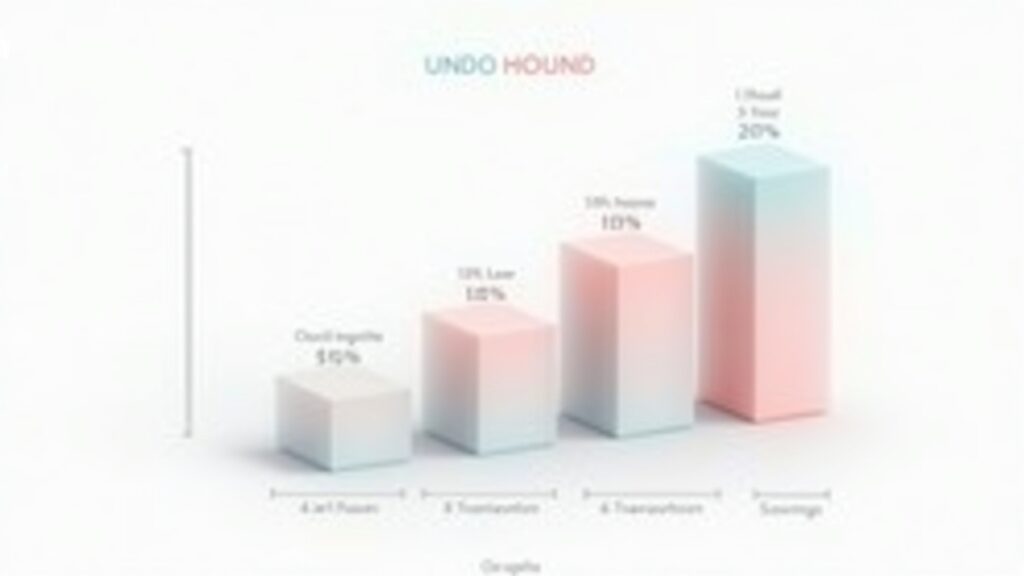Advertisements
Ever stared at your bank statement wondering where all your money went? Yeah, me too! I’ll never forget the time I realized I was spending 40% of my income on rent while barely saving anything. That wake-up call led me down a rabbit hole of budget percentages, and let me tell you, it completely changed my financial life.
Here’s the thing – there’s no one-size-fits-all budget that works for everyone. But understanding how to allocate your income based on what you earn can be a total game-changer. Whether you’re making $30K or $130K, knowing the right percentages to aim for in each spending category helps you build wealth instead of just surviving paycheck to paycheck.
The Classic 50/30/20 Rule (And Why It Might Not Work for You)

You’ve probably heard of the 50/30/20 budget rule – it’s like the vanilla ice cream of budgeting strategies. The idea is simple: 50% for needs, 30% for wants, and 20% for savings and debt payments.
When I first tried this method making $45,000 a year, I quickly realized something was off. My rent alone was eating up 35% of my income! There was no way I could keep my needs under 50%. And honestly, that 30% for wants felt like a luxury I couldn’t afford.
The truth is, this rule works best if you’re earning a middle to upper-middle class income. For lower incomes, you might need to adjust to something like 70/20/10 or even 80/15/5 just to make ends meet. And that’s totally okay – you gotta work with what you’ve got.
Budget Percentages for Different Income Levels
Let me break down what realistic budget percentages look like across different income brackets. These are based on what I’ve seen work for real people, not some theoretical perfect world.
Under $40,000 Annual Income
When you’re earning under $40K, every dollar counts. Here’s what typically works:
- Housing: 30-40% (might need roommates or a studio)
- Transportation: 15-20%
- Food: 12-15%
- Insurance: 10-15%
- Utilities: 5-8%
- Savings: 5-10%
- Personal/Entertainment: 5-10%
I remember when I was in this bracket – I had three roommates and drove a 15-year-old Honda. Not glamorous, but it helped me save that crucial 5-10%.
$40,000 – $70,000 Annual Income
This is where you get a bit more breathing room:
- Housing: 25-30%
- Transportation: 10-15%
- Food: 10-12%
- Insurance: 8-10%
- Utilities: 5-7%
- Savings: 10-15%
- Personal/Entertainment: 10-15%
- Debt payments: 5-10%
At this level, you can finally start thinking about your own place. Just don’t go crazy – I made the mistake of getting a fancy apartment that ate up 35% of my income. Big regret!
$70,000 – $100,000 Annual Income
Now we’re talking! This is where the traditional percentages start making more sense:
- Housing: 20-25%
- Transportation: 10-12%
- Food: 8-10%
- Insurance: 7-9%
- Utilities: 4-6%
- Savings: 15-20%
- Personal/Entertainment: 10-15%
- Investments: 5-10%
Over $100,000 Annual Income
With six figures, you’ve got options. But here’s where lifestyle creep becomes your enemy:
- Housing: 15-20%
- Transportation: 8-10%
- Food: 6-8%
- Insurance: 5-7%
- Utilities: 3-5%
- Savings: 20-25%
- Investments: 10-15%
- Personal/Entertainment: 10-15%
The Secret Sauce: Adjusting for Your Real Life
Here’s what most budget guides won’t tell you – these percentages need to flex with your life circumstances. Got kids? Your food budget might need to be higher. Living in San Francisco? Good luck keeping housing under 30%!
I learned this the hard way when I moved from Ohio to Seattle. My perfectly balanced budget got thrown out the window when rent prices nearly doubled. Instead of beating myself up, I adjusted my percentages and cut back on entertainment spending temporarily.
The key is tracking your actual spending for a few months to see where your money really goes. You might be surprised – I discovered I was spending $200 a month on coffee. Ouch!
Making It All Work Together

The biggest mistake I see people make? They create these perfect percentage budgets on paper but never actually implement them. Start small – pick one category and work on getting it within range.
Also, remember that increasing your income is sometimes easier than cutting expenses. When I was stuck at $35K, no amount of budgeting magic could make those percentages work perfectly. Getting a side hustle and eventually a better job was what really changed the game.
Listen, budgeting by percentages isn’t about restricting your life – it’s about giving every dollar a purpose. Once you find the right balance for your income level, you’ll actually feel more free because you know exactly where your money’s going. And trust me, that peace of mind is worth way more than any impulse purchase!
Ready to take control of your finances? Check out more practical money tips at Cashflow Zen – we’ve got tons of real-world advice to help you master your money, no matter what you’re earning.




[…] discover. For more practical money tips and real-life financial wins (and fails!), check out other posts on Cashflow Zen. We’re all figuring this out […]